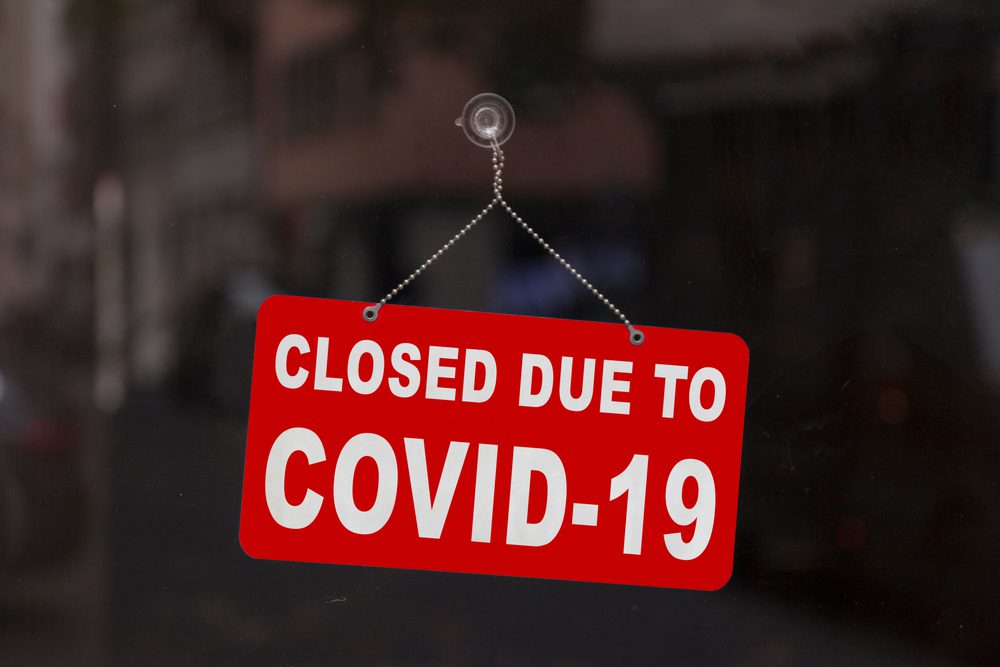
The United States has continued to see a spike in the number of new coronavirus cases in many parts of the world after the state began to suspend lockdown orders in May. In reality, new cases and hospitalizations have spiked at such a disturbing rate in some states that experts believe that a return to lockdown is the only way to rectify the situation.
“Quite simply, these states reopened before it was safe to do so—there was still frequent community transmission, measures to reduce transmission were not implemented (physical distancing requirements and masks in public places), and there were not sufficient test-and-trace capabilities in place,” Angela Rasmussen, PhD, a virologist at Columbia University in New York City, recently told Best Life.
Currently, Rasmussen reported that at least five additional states will consider doing the same thing. The factors used to shape this opinion? “Anywhere that case counts are beginning to tilt up, especially if that upward shift can’t be explained by increased testing, should consider re-instituting stay-home measures,” Rasmussen said.
Read on to see which states she is the most worried about.

1. Florida
CBS News reported on June 17 that Florida’s coronavirus hospitalization number has almost doubled since restaurants and retail stores were authorized to reopen at 25% capacity on May 4. The Florida Department of Health confirmed just over 2,600 new cases Wednesday, the second largest spike in the state.
Despite rising hospitalization rates and new incidents, Gov. Ron DeSantis said he would not enforce lockdown orders. Nevertheless, several restaurant and bar owners have shut down their businesses on their own to prevent the spread.

2. California
The Los Angeles Times reported on June 17 that California health officials had made a statement saying that while that numbers of new cases are a significant indicator, it is the number of hospitalizations that tells the more realistic story of where the state is in terms of reducing the spread.
And according to the paper’s data review, after statewide hospitalizations stayed unchanged for many weeks, several parts of California have begun to rise — forcing lawmakers to consider slowing down more re-opening efforts if things don’t improve.
“We have met the enemy, and they are us,” Robert Levin, MD, the health officer in Ventura County—where hospitalizations are up 75 percent this week—told the Los Angeles Times. “And many of us have to do a better job of social distancing and quarantine. Some of us are doing a great job; we’re stalwarts. If we can do this—and I know we can—we can prevent the state from telling us that we must take a step back from some of the gains we’ve made in opening our activities and businesses.”

3. Texas
Since Texas began its re-opening on May 1, CBS News reported on June 17, at least 12 restaurants in and around Houston have declared temporary shutdowns to sanitize their establishments and test employees due to concerns about the recent increase in new cases. And on Tuesday, the State Health Department recorded an 8.3 percent rise in hospitalizations to an unprecedented 2.518—the biggest daily increase since June 4.
Things are escalating so rapidly in Texas that nine of the state’s mayors, including those in Houston, Dallas, Austin, and San Antonio, have pushed Gov. Greg Abbott to give them the power to make face masks mandatory “where physical distancing cannot be practiced,” CNN reported. As of the afternoon of 17 June, no such authority has been officially allowed to do so.

4. Arkansas
According to the Arkansas Department of Health, 415 new cases of COVID-19 were reported in the state on 17 June, taking Arkansas to a total of 13,606. The rise follows the start of phase two of the re-opening on 15 June, which requires restaurants and businesses to fill up to two-thirds of their capacity, increasing from one-third of the capacity allowed during the initial phase of the Arkansas re-opening program.
Also on June 15, a data model from the University of Arkansas for Medical Sciences estimated that death and hospitalization will continue to rise in the state by October, much longer than originally expected by experts.
“What the model is saying instead is, ‘all things considered, or if conditions at this time do not change, this is what could happen,'” Mark Williams, PhD, dean of the College of Public Health, told a local CBS News affiliate.

5. Alaska
On 16 June, the Alaska Department of Health and Social Services reported a total of 753 cases in the state, including 12 new cases, which was a significant step forward compared to three new cases reported the day before.
Anchorage Daily News reports that the test results may have been postponed temporarily, potentially accounting for the lack of new cases on 15 June. Yet the state also reported 29 new cases on June 13, its highest record since the start of the pandemic.























